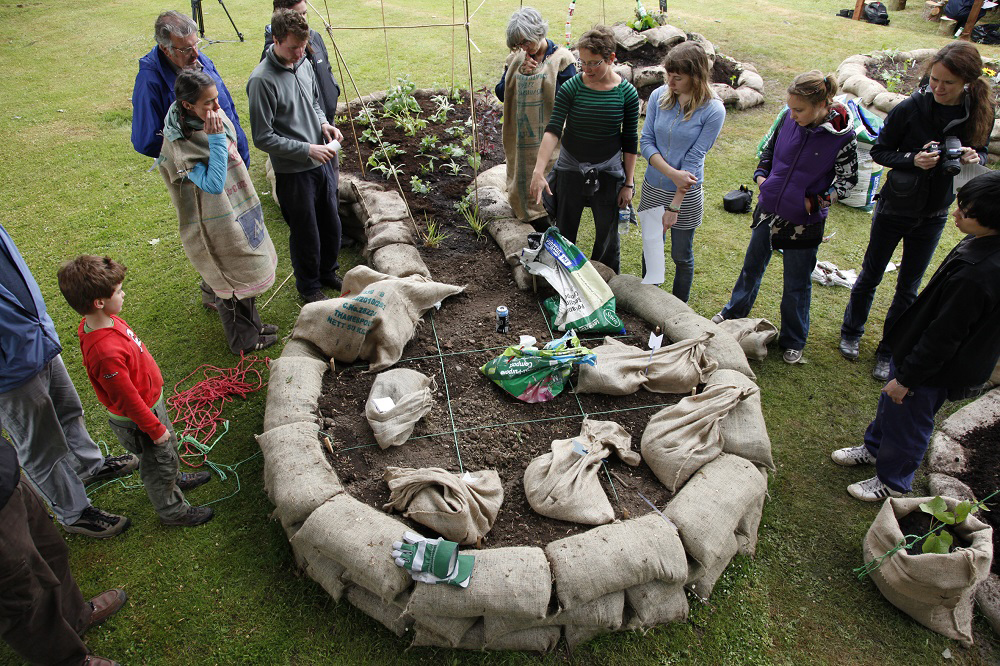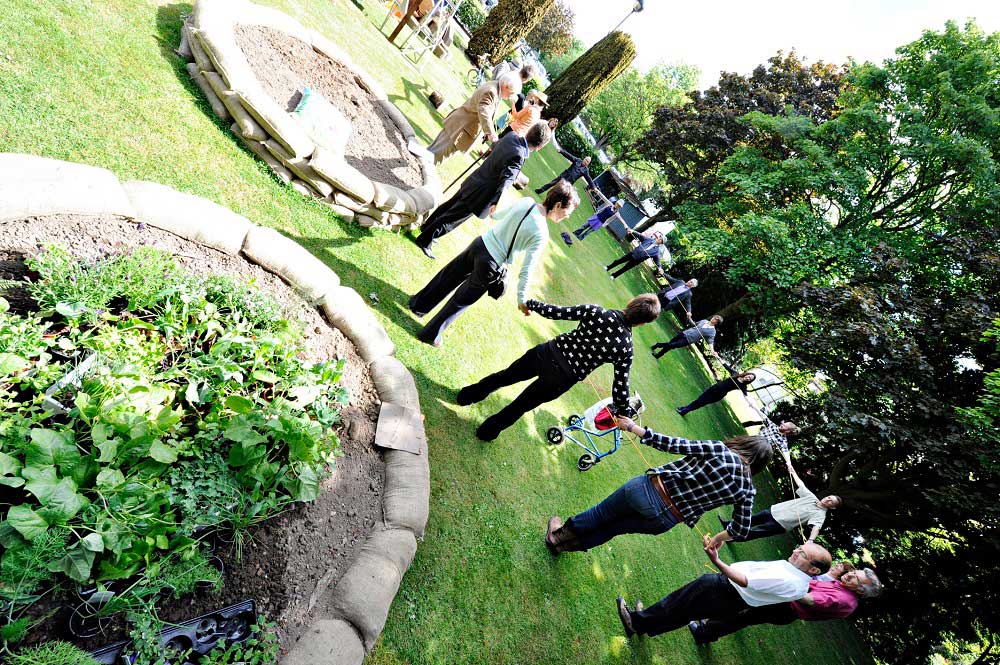Weekly Digest – 27.05.20
Some of you will already be familiar with the Landscaping and Gardening Society (LAGS) at Loughborough University but if not you might have walked past their garden located next to the Estates Yard that is currently full of hardy geraniums, aquilegias, roses and many vegetables. This community garden has been tended by generations of students under the watchful eye of Martha Worsching whose passion and dedication to it has been a key part of its success. This week I had an email from Martha and Agnes Wojtusiak asking if I had some photos of when the land was first cultivated as they were planning to submit a video to Gardener’s World, showing its development since it first came about.
What might be even less well known is that the origins of the garden go back to when it was part of a Radar project in 2010 when we invited artist Amy Franceschini to develop a new work that engaged with issues around land, food production and sustainability. Amy leads up an internationally recognised collective of artists called FutureFarmers whose work often deconstructs existing systems through participatory actions that enable those involved to think about change in the places we live. Amy invited artist and interaction designer Myriel Milicevic to work with her on the project. The project they devised was called Beneath the Pavement: A Garden and Myriel described its aims as being ‘to consider biological forms in relation to political and social systems. It looks at the potential of a small plot of land on the Loughborough University campus to tell social and political stories, deconstructing systems, planting them and watching them grow’.
It was an ambitious project on a less than ambitious budget. I remember having to convince the University to let us have a plot of land for the activity to take place, to source something between a pavilion and a shed to house information and publications and to recruit a wide cross section of people to take part in the project. These included academics, environmentalists, artists and gardeners who all attended a three-day workshop where they collectively debated and then designed edible landscapes based on political systems. They were informed by contributions from political scientists and historians and the discussions informed how the plot has started to develop.

While the project was an interesting practical exploration of the politics of land, from historical examples to contemporary perspectives, perhaps the most rewarding aspect of the project was its legacy. Following the completion of the project the land was taken over by staff and students who took ownership of it and started to turn it into both a society and an active community garden. Over the years the beds and borders have expanded, a polytunnel has been added, and as well as lots of hard work there are also lots of social events that bring like-minded students together. The society has been particularly popular with PhD and international students, in part because they are still on campus over the summer. The commitment to the garden was recognised when the society won the East Midlands in Bloom ‘Its Neighbourhood Award’ from the Royal Horticultural Society for the fifth consecutive year.
If you are interested in gardening please do have a look at the LAGS LSU page. You will also be pleased to hear that regular volunteers are still managing to tend the garden and hopefully we might shortly hear its story on an upcoming episode of Gardeners World.
Nick Slater
Director, LU Arts
The Limit
The Limit showcases the creativity that exists within the student population, creating a sense of community.

